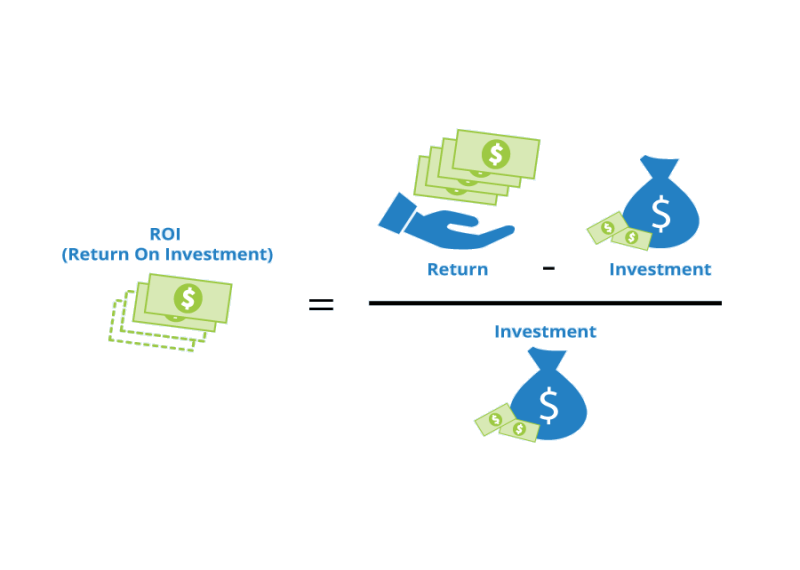How to calculate the return on investment of a marketing campaign?

Marketing is everything a company does to attract and maintain a relationship with its customers. It is not an exact science, but it is getting better. The biggest question companies have about their marketing campaigns is the return on their investment (ROI).
Calculating Simple ROI
The most basic way to calculate the ROI of a marketing campaign is to integrate it into the overall business line calculation.
You take the sales growth from that business or product line, subtract the marketing costs, and then divide by the marketing cost.
(Sales Growth - Marketing Cost) / Marketing Cost = ROI
1
So, if sales grew by $1,000 and the marketing campaign cost $100, then the simple ROI is 900%.
(($1000-$100) / $100) = 900%.
That’s a pretty amazing ROI, but it was picked more for round numbers than for realism.
Calculating Campaign Attributable ROI
The simple ROI is easy to do, but it is loaded with a pretty big assumption. It assumes that the total month-over-month sales growth is directly attributable to the marketing campaign. For the marketing ROI to have any real meaning, it is vital to have comparisons. Monthly comparisons – particularly the sales from the business line in the months prior to the campaign launching – can help show the impact more clearly.
To really get at the impact, however, you can get a little more critical. Using a 12-month campaign lead up, you can calculate the existing sales trend. If sales are seeing an organic growth on average of 4% per month over the last 12-month period, then your ROI calculation for the marketing campaign should strip out 4% from the sales growth.
As a result, it becomes:
(Sales Growth - Average Organic Sales Growth - Marketing Cost) / Marketing Cost = ROI
So, let's say we have a company that averages 4% organic sales growth and they run a $10,000 campaign for a month. The sales growth for that month is $15,000. As mentioned, 4% ($600) of that is organic based on historical monthly averages. The calculation goes:
($15,000 - $600 - $10,000) / $10,000 = 44%
In this example, taking out organic growth only dropped the number from 50% to 44%, but that is still stellar by any measure. In real life, however, most campaigns bring much more modest returns, so taking out organic growth can make a big difference.
On the flip side, however, companies with negative sales growth need to value the slowing of the trend as a success.
For example, if sales dropped $1,000 a month on average for the previous 12-month period and a $500 marketing campaign results in a sales drop of only $200 that month, then your calculation centers on the $800 ($1,000 - $200) you avoided losing despite the established trend. So even though sales dropped, your campaign has an ROI of 60% (($800 - $500) / $500) – a stellar return in the first month of a campaign allowing you to defend sales before growing them.
Challenges With Marketing ROI
Once you have a fairly accurate calculation, the remaining challenge is the time period. Marketing is a long-term, multiple-touch process that leads to sales growth over time. The month-over-month change we were using for simplicity's sake is more likely to be spread over several months or even a year. The ROI of the initial months in the series may be flat or low as the campaign starts to penetrate the target market. As time goes by, sales growth should follow and the cumulative ROI of the campaign will start to look better.
Another challenge is that many marketing campaigns are designed around more than just generating sales. Marketing agencies know that clients are results-oriented, so they get around weak ROI figures by adding in more of the soft metrics that may or may not drive sales in the future. These can include things like brand awareness via media mentions, social media likes, and even the content output rate for the campaign. Brand awareness is worth considering, but not if the campaign itself is failing to drive sales growth over time. These spin-off benefits shouldn’t be the core of a campaign because they can’t be accurately measured in dollars and cents.
Measuring ROI in Other Ways
We’ve been focusing on sales growth, whereas many campaigns are aimed at increasing sales leads with the sales staff responsible for the conversion. In this case, you need to estimate the dollar value of the leads by multiplying the growth in leads by your historical conversion rate (what percent actually buy).
There are also hybrid campaigns where the marketer brings leads through a qualifying filter to get a non-sales conversion; for example, something like a person signing up for monthly real estate analysis reports by giving the marketer an email to pass onto the mortgage broker client. The ROI for a campaign like this still has to be measured by how many of those email leads you actually convert into paid sales for goods or services over time.
The Bottom Line
To be clear, marketing is an essential part of most businesses and can pay many times over what it costs. To make the most of your marketing spend, however, you need to know how to measure its results. Marketing firms will sometimes try to distract you with softer metrics, but ROI is the one that matters for most businesses.
The ROI of any marketing campaign ultimately comes in the form of increased sales. It is a good idea to run your calculation using sales growth minus the average organic growth on a regular basis throughout any campaign because the results do take time to build. That said, if the ROI isn’t there after a few months, it might just be the wrong campaign for your target market.
